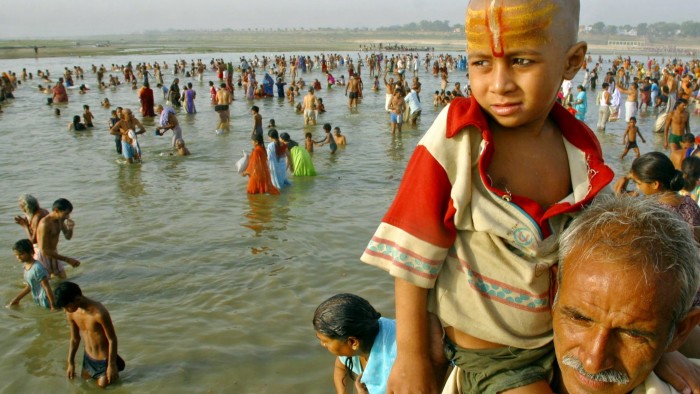Delhi Notebook: How the wedding syndrome could fix India


Roula Khalaf, Editor of the FT, selects her favourite stories in this weekly newsletter.
There is a perception that Indian governments are useless at getting important things done.
One has only to look at the dismal state of schools and sanitation to know that the perception is often right. But there are exceptions, including the organisation of mass religious festivals and the mission to put a satellite in orbit around Mars.
Two questions then arise: what is the recipe for those rare successes and can it be applied more broadly for the benefit of India’s 1.3bn people?
A good place to find the answer is on the Ganges, the holy river that sweeps across north India from the foothills of the Himalayas to the Bay of Bengal.
A few weeks ago, I heard a senior water official lay out the government’s ambitious plans for cleaning the polluted river by treating every drop of sewage from 118 towns and cleaning the toxic effluent from 764 factories.
That was a wonderful presentation, I told him afterwards, but previous governments had launched similar projects in the 1980s and 1990s, and little had been achieved. Had anyone actually laid any concrete for a single sewage plant? The official seemed almost offended by the idea that plans should be acted upon. “It’s going to be quite a huge challenge,” he responded. “They are very old cities and laying sewers is going to take a lot of time.”
Yet this is the same Ganges at whose mouth the West Bengal government — a few weeks after the official spoke — paved the roads, organised ferries and buses and prepared a camp with toilets, electricity and rubbish collection for the 1.5m pilgrims who flock to Sagar Island for an annual Hindu festival.
It is the same Ganges on whose sandbanks the usually inept Uttar Pradesh government built a fully serviced temporary city for tens of millions of Hindu pilgrims attending the 2013 Kumbh Mela at Allahabad to bathe in the river’s waters. The festival was arguably the largest-ever gathering of humans on Earth.
So remarkable was the achievement that it is the subject of Kumbh Mela: Mapping the Ephemeral Megacity, a book featuring research from Harvard University’s South Asia Institute.
At the book’s launch in Mumbai, Devesh Chaturvedi, Allahabad’s divisional commissioner at the time of the Kumbh Mela, laid out some of the statistics: 14 clinics and hospitals, 960km of power lines, 25,000 street lights, 52 electricity substations, 280km of roads, 18 pontoon bridges, 690km of water pipes, 34,000 toilets, 20,000 police officers and 1,000 anti-terrorist agents. Polluting industries upstream, including tanneries in Kanpur, were temporarily shut and Allahabad’s own sewage treatment capacity was more than doubled. No crime was reported and it all cost just $1 a day per person.
India has been effective in the past and it can be again. Airlift, a new Bollywood thriller, celebrates the evacuation of 170,000 Indian migrant workers from Kuwait after Iraq invaded in 1990. Most were bussed to Jordan and then flown by state-owned airlines on hundreds of flights from Amman to Mumbai.
New Delhi this year imposed restrictions on cars for two weeks, attempting to curb pollution by banning them on alternate days depending on their licence plates. The air remained filthy but traffic flowed better and the authorities proved that they could enforce radical measures if necessary in the public interest.
So why do Indian authorities sometimes act successfully and sometimes fail to act at all? If Allahabad can temporarily host an efficient city twice as large as itself, why does it not have good sewage treatment, law enforcement and healthcare all the time?
Mr Chaturvedi says the Kumbh Mela works because the authorities ensure money is well spent and the officials and volunteers involved are motivated by a fervent desire to serve the pilgrims.
Rahul Mehrotra, an architect and Harvard professor who co-edited Kumbh Mela, explains in a way that will appeal to anyone who has attended one of the country’s extravagant, multi-day nuptial ceremonies. Everyone is focused on a single goal, they briefly bury their differences and enjoy a spurt of energy in seeking to make the occasion a success. It is, he says, “Indian wedding syndrome”. The implication, sadly, is that it cannot be done every day, year in, year out.
Comments